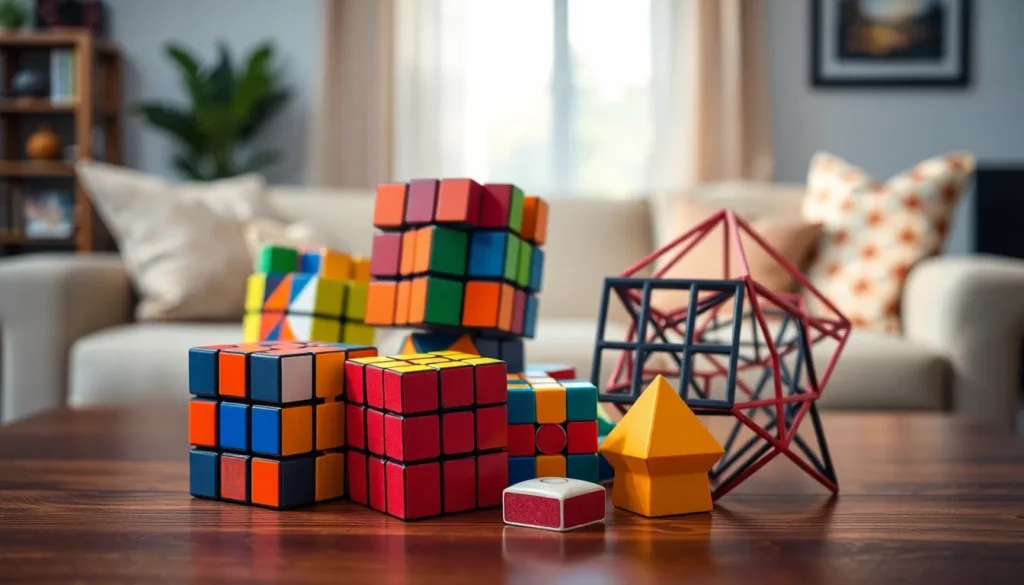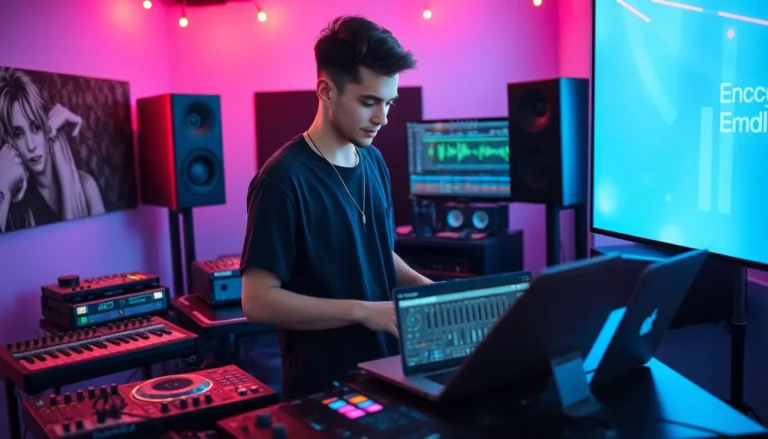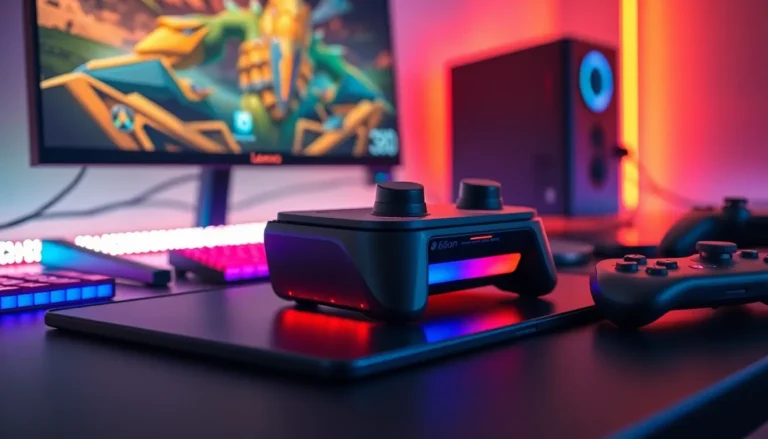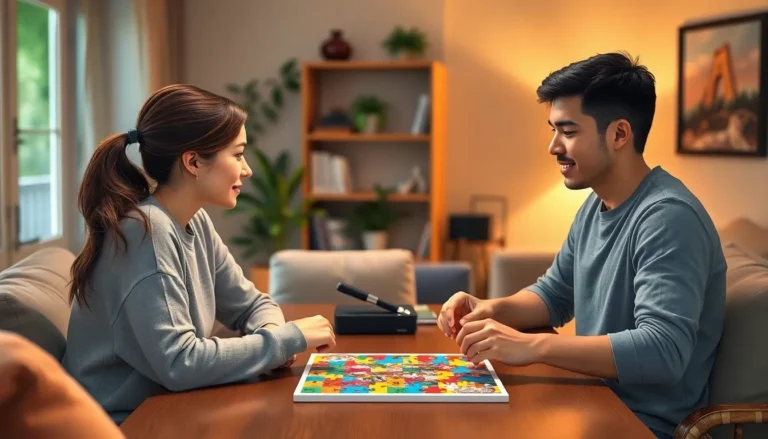Rubik’s puzzles have captivated minds and sparked creativity since their debut in the 1970s. These colorful, twisty enigmas challenge both novices and seasoned solvers, blending fun with cognitive exercise. Each puzzle offers a unique journey, inviting players to unlock the secrets hidden within its vibrant squares.
As enthusiasts explore various types of Rubik’s puzzles—from the classic cube to intricate shapes like the Pyraminx and Skewb—they discover not just a game but a community. With competitions and online forums thriving, the world of Rubik’s puzzles continues to evolve, inspiring countless individuals to improve their skills and share their passion. Whether for leisure or competition, these puzzles remain a timeless test of logic and patience.
Table of Contents
ToggleOverview of Rubik’s Puzzles
Rubik’s puzzles encompass a wide range of colorful, interlocking challenges that stimulate cognitive skills. Initially introduced by Ernő Rubik in 1974, the classic 3×3 cube laid the groundwork for a series of innovative designs and complex variations.
Types of Rubik’s Puzzles
- Classic Cube: The original 3×3 cube remains the most recognized model. Its simplicity belies the intricate problem-solving techniques required to solve it.
- 2×2 Cube: The Pocket Cube, or 2×2, offers a simpler alternative, ideal for beginners while still challenging for experienced solvers.
- Pyraminx: A pyramid-shaped puzzle that introduces unique rotation dynamics, appealing to those seeking a different solving experience.
- Skewb: This cube features a unique articulation mechanism, providing a twist on traditional cubic puzzles and requiring distinct strategies.
- Megaminx: A dodecahedron-shaped puzzle with 12 faces, the Megaminx presents numerous algorithms and patterns for solving.
The Community and Competitions
A passionate community surrounds Rubik’s puzzles, fostering enthusiasm through competitions and online forums. Major events, such as the World Cube Association (WCA) competitions, offer participants the chance to test their skills and connect with fellow enthusiasts. Online platforms provide tutorials, resources, and solving techniques, enhancing engagement among novice and advanced cubers alike.
Benefits of Solving Rubik’s Puzzles
Solving Rubik’s puzzles promotes various cognitive benefits. Engaging with these puzzles enhances critical thinking, spatial awareness, and problem-solving capabilities. Studies indicate that regular interaction with such puzzles can improve memory and concentration, contributing to mental agility.
Rubik’s puzzles celebrate imaginative design and strategic thinking while providing endless entertainment, securing their place as a staple in the world of recreational puzzles.
History of Rubik’s Puzzles
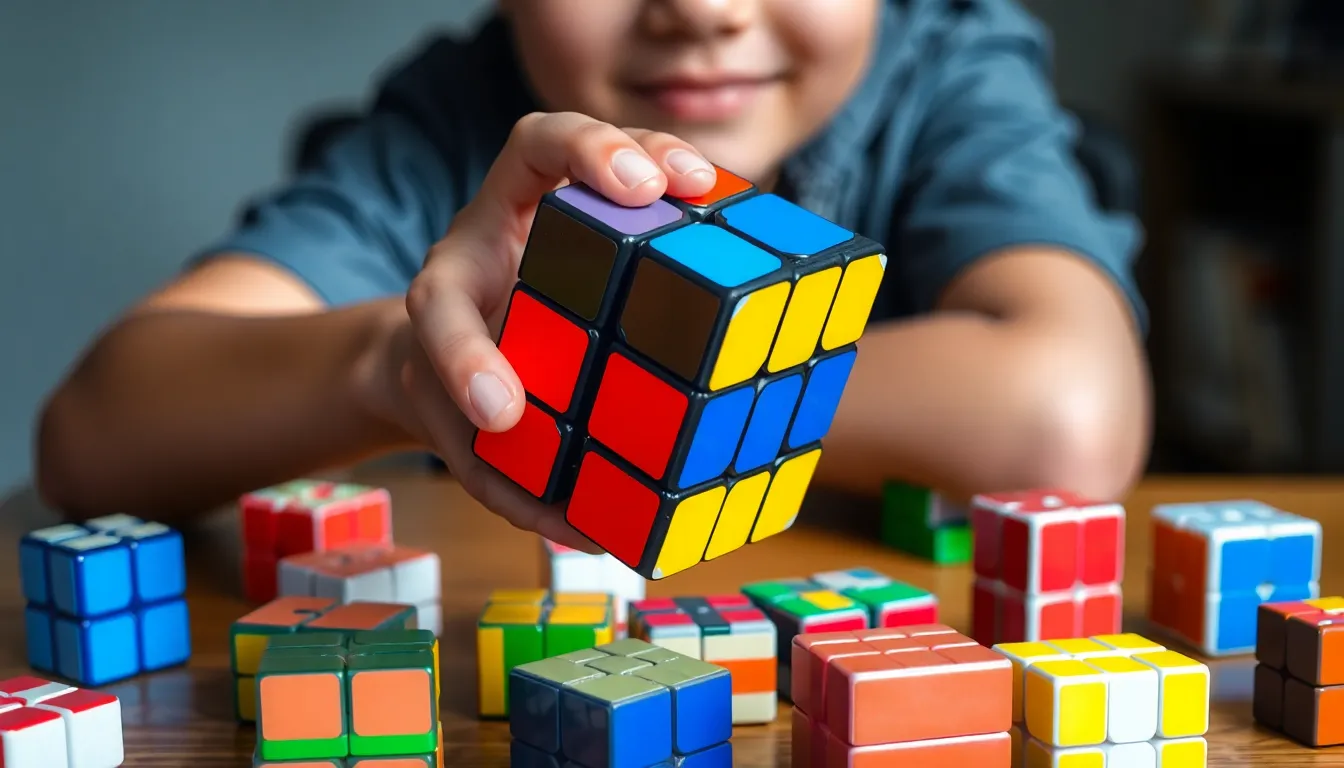
Rubik’s puzzles hold a rich history that traces back to their invention in the 1970s, marking the beginning of a global phenomenon that continues to thrive. These puzzles have not only entertained but also challenged minds around the world.
Invention and Early Years
Ernő Rubik, a Hungarian architect, invented the original Rubik’s Cube in 1974. Initially designed as a teaching tool to demonstrate three-dimensional geometry, the cube quickly gained popularity. By 1980, it debuted internationally, captivating the public and spawning various merchandise. The Rubik’s Cube became a symbol of the 1980s, with over 100 million cubes sold by 1983, solidifying its status in popular culture.
Evolution Over Time
Rubik’s puzzles expanded significantly beyond the classic 3×3 cube. The introduction of the 2×2 cube, Pyraminx, and Skewb broadened the puzzle landscape. In the late 1990s and early 2000s, manufacturers innovated with more complex designs like the Megaminx and the Ghost Cube. Technological advancements also paved the way for digital versions and online competitions, further engaging a younger audience. The World Cube Association established in 2004 formalized competitive Rubik’s events, fostering a vibrant global community.
Types of Rubik’s Puzzles
Rubik’s puzzles include a variety of engaging shapes and configurations, appealing to enthusiasts of all skill levels. This section details the most notable types: standard cube variants and non-cube variants.
Standard Cube Variants
Standard cube variants primarily consist of different sizes and configurations of the classic Rubik’s Cube. Each variant offers unique challenges.
- 2×2 Cube: Known as the Pocket Cube, it features four squares on each side, providing a simpler challenge suited for beginners.
- 3×3 Cube: The original Rubik’s Cube has three squares on each side. This variant remains the most popular, with the largest following.
- 4×4 Cube (Rubik’s Revenge): This cube adds complexity with an extra layer. It introduces the possibility of parity errors, which require additional solving techniques.
- 5×5 Cube (Professor’s Cube): The 5×5 cube adds even more pieces, enhancing the difficulty level significantly.
- Skewb: This cube features a unique mechanism allowing rotation around its corners, offering a different solving experience.
Non-Cube Variants
Non-cube variants showcase unique shapes while retaining the same fundamental mechanics as traditional Rubik’s puzzles.
- Pyraminx: This tetrahedron-shaped puzzle adds a new layer of challenge with its triangular faces and unique twisting mechanics.
- Megaminx: With twelve sides, this dodecahedron-shaped puzzle provides an intricate challenge that tests problem-solving skills.
- Square-1: This unique cube can change shape during manipulation, requiring solvers to adapt their strategies.
- Ghost Cube: While initially appearing like a traditional cube, its irregular pieces and lack of color make it more challenging to solve.
- Mirror Cube: This cube varies only in piece size, creating a shape-shifting challenge that requires spatial awareness to solve.
These diverse puzzle types create a vibrant landscape for Rubik’s enthusiasts, fostering engagement and allowing for continuous exploration of problem-solving techniques.
Solving Techniques for Rubik’s Puzzles
Rubik’s puzzles require a blend of strategy and practice for effective solving. This section discusses techniques tailored for both beginners and advanced solvers.
Beginner Methods
Beginner methods focus on foundational techniques that simplify the solving process. Common approaches include:
- Layer-by-Layer Method: Solving one layer at a time provides a clear structure. First, complete the top layer, followed by the middle layer, and finally the bottom layer. This systematic approach helps beginners visualize the solution.
- Cross Formation: Start with forming a cross on the top layer. Align edges with the center pieces to lay groundwork for completing the first layer.
- Beginner’s Algorithms: Familiarize with basic algorithms to execute simple moves. Common sequences, like the Right-Hand Rule (R) and Left-Hand Rule (L), facilitate efficient movement of pieces.
- Color Matching: Focus on matching colors rather than solving the cube blindly. Beginners often find color-based approaches easier to grasp, as it aids in tracking movements.
- Practice: Repeated practice solidifies understanding. Consistency reinforces techniques and builds confidence in solving.
Advanced Strategies
Advanced strategies elevate solving techniques for experienced users. These methods provide enhanced efficiency and speed:
- CFOP Method: The CFOP (Cross, F2L, OLL, PLL) method streamlines solving into four distinct stages. This strategy allows for faster solves through advanced algorithms.
- Roux Method: Employ the Roux Method for a block-building approach, focusing on corner pieces first. This permits flexibility compared to traditional layer methods, allowing for reduced move count.
- ZZ Method: Combine edge orientation and F2L through the ZZ Method. This approach minimizes rotations, facilitating faster solves and transitions into the last layer smoothly.
- Algorithms Mastery: Learn and master advanced algorithms for specific situations. This knowledge helps solve multiple configurations, thus increasing solving speed.
- Finger Tricks: Develop finger tricks to enhance speed and fluidity in moves. Efficient use of fingers leads to quicker transitions and fewer pauses during solving.
- Inspection: Utilize the inspection time effectively before starting. Analyze the cube for potential strategies to minimize solving time.
By employing these methods, both beginners and advanced solvers can master Rubik’s puzzles and engage further with this captivating activity.
The Cultural Impact of Rubik’s Puzzles
Rubik’s puzzles have made a significant mark on popular culture and education, influencing various spheres, from media to academic settings.
Popularity in Media and Competitions
Rubik’s puzzles gained prominence through various media, including movies, TV shows, and online platforms. They’ve appeared in films like “The Pursuit of Happyness,” showcasing their appeal beyond mere entertainment. Television programs often feature speedcubing competitions, where participants solve puzzles in remarkable times, highlighting the skill and dedication of competitors. Online platforms, including YouTube and social media, have fostered communities that share solving techniques, tutorials, and competitions. Large-scale events like the World Championship and various national competitions attract thousands, featuring categories for different puzzle types and age groups.
Educational Benefits
Rubik’s puzzles offer considerable educational advantages. They enhance critical thinking and problem-solving abilities, encouraging logical reasoning and systematic approaches. Many educators incorporate these puzzles into classroom activities to promote spatial reasoning and cognitive skills. Research indicates that engaging with puzzles improves focus and memory among students. Programs utilizing Rubik’s puzzles have shown benefits in STEM education, as they integrate mathematical concepts and analytical skills into fun, hands-on learning experiences.
Rubik’s puzzles continue to captivate minds across generations. Their unique blend of challenge and entertainment makes them a favorite among both novices and seasoned solvers. With a diverse range of puzzles available and a thriving community supporting enthusiasts, the allure of these colorful cubes and shapes shows no signs of fading.
The cognitive benefits associated with solving these puzzles add to their appeal, enhancing critical thinking and problem-solving skills. As technology evolves and new variants emerge, the world of Rubik’s puzzles remains dynamic and engaging. Whether for personal enjoyment or competitive spirit, these puzzles offer endless opportunities for exploration and growth.

